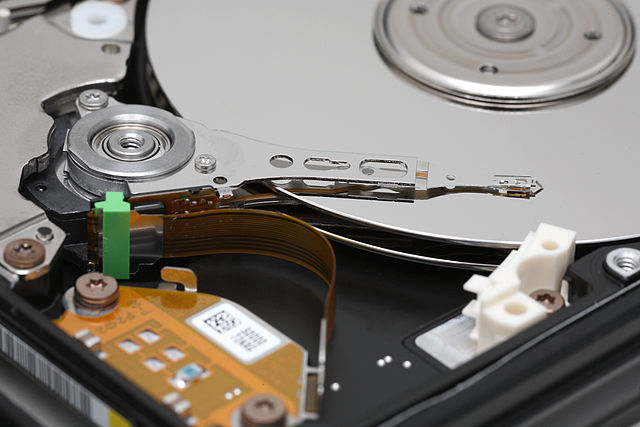Submitted by DataRecoveryGroup on
 If you’ve ever dealt with data loss from a hard drive in the past, you might know how a small drop, an accidental knock, an electric surge, a bit of water, or simply time can wear out and ruin a hard drive. While your computer or the external surface of your hard drive’s case may appear to be just fine, the internal components may be off, making your computer unable to detect your hard drive.
If you’ve ever dealt with data loss from a hard drive in the past, you might know how a small drop, an accidental knock, an electric surge, a bit of water, or simply time can wear out and ruin a hard drive. While your computer or the external surface of your hard drive’s case may appear to be just fine, the internal components may be off, making your computer unable to detect your hard drive.
Understanding how your hard drive operates can give you a better sense of why it is so sensitive to water, physical damage, bumps, shocks and time.
Your Hard Drive is Fast
As many hard drive demo videos show, the platters of a hard drive spin at an incredibly fast rate. They spin anywhere from 3,600 – 15,000 revolutions per minute (rpm) based on their application. That allows some of the best performing hard drives to save over 200MB per second. If you were to take anything spinning at a fast rate and turn it at an angle or upside down, it would start to wobble and become unbalanced. That’s why it’s recommended that you don’t pick up your hard drive or laptop computer if you can hear the hard drive, and to shut down your laptop or completely disconnect your external hard drive before transporting it.
Your Hard Drive is Sensitive
Luckily for us, hard drive manufacturers continue to get better at factoring in human error in their design, and are more resilient to drops and bumps than they were in the past. Despite this, hard drives have moving parts that are extremely sensitive to any kind of impact. Even an accidental bump into a wall, or a drop from your waist can permanently damage a hard drive.
The Head and Platter Don’t Touch – Barely
The two most visually noticeable parts of a hard drive is the shiny platter and the arm. The platter is where all data of the hard drive is magnetically stored. At the end of the arm is a read/write head that will read data already stored on a hard drive that you are trying to access, or write data to be stored on the hard drive. The read/write head appears to touch the platter, but it actually hovers millimeters over the platters.
If you were to introduce a tiny dust particle, or residue left over from dried up water on the platters, it could come in contact with the read/write head, which leaves a scratch on the platters and creates additional airborne particles from the platters. Repeat that process many times, and you have a damaged hard drive that your computer cannot detect.
Your Hard Drive is Unpredictable
Lastly, you can treat your hard drive with the best care possible, and it can still give out on you at any time. You may have heard the saying “it’s not if your hard drive will fail, it’s when”. Like any mechanical object, the internal parts of a hard drive will wear out over time and eventually lead to hard drive failure. While the longevity of hard drives continues to improve, no hard drive is fail proof.
Is Your Data Backed Up?
All of this being said, now is a good time to make sure your data is regularly backed up. If you have your data stored on external hard drives, be sure to keep a copy in a separate location from your computer in the event of a flood or fire. Be sure you routinely back up files to have current backed up versions of them. If you use a cloud based service, know when your plan expires and what you’ll need to do to continue backing up current versions of your files.
